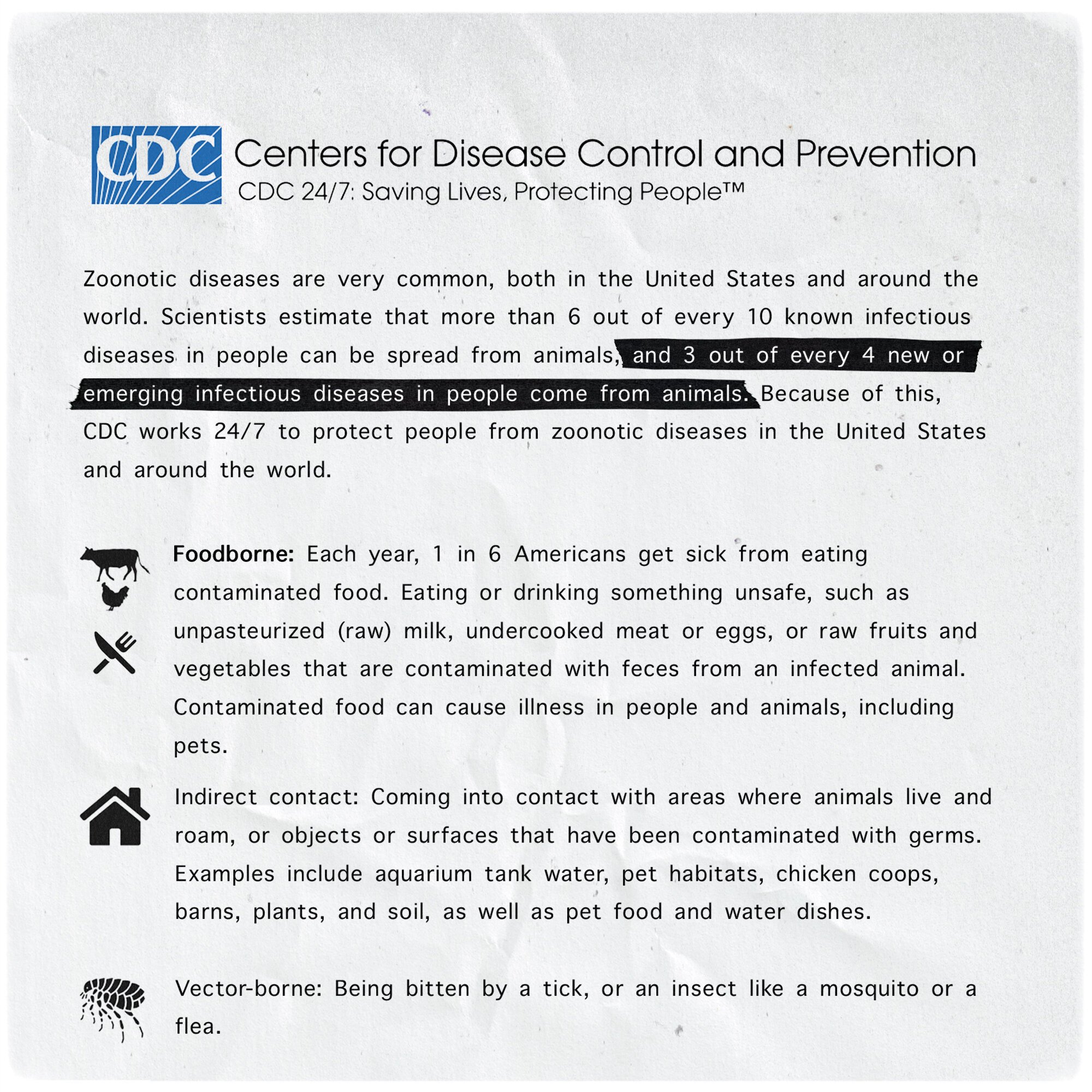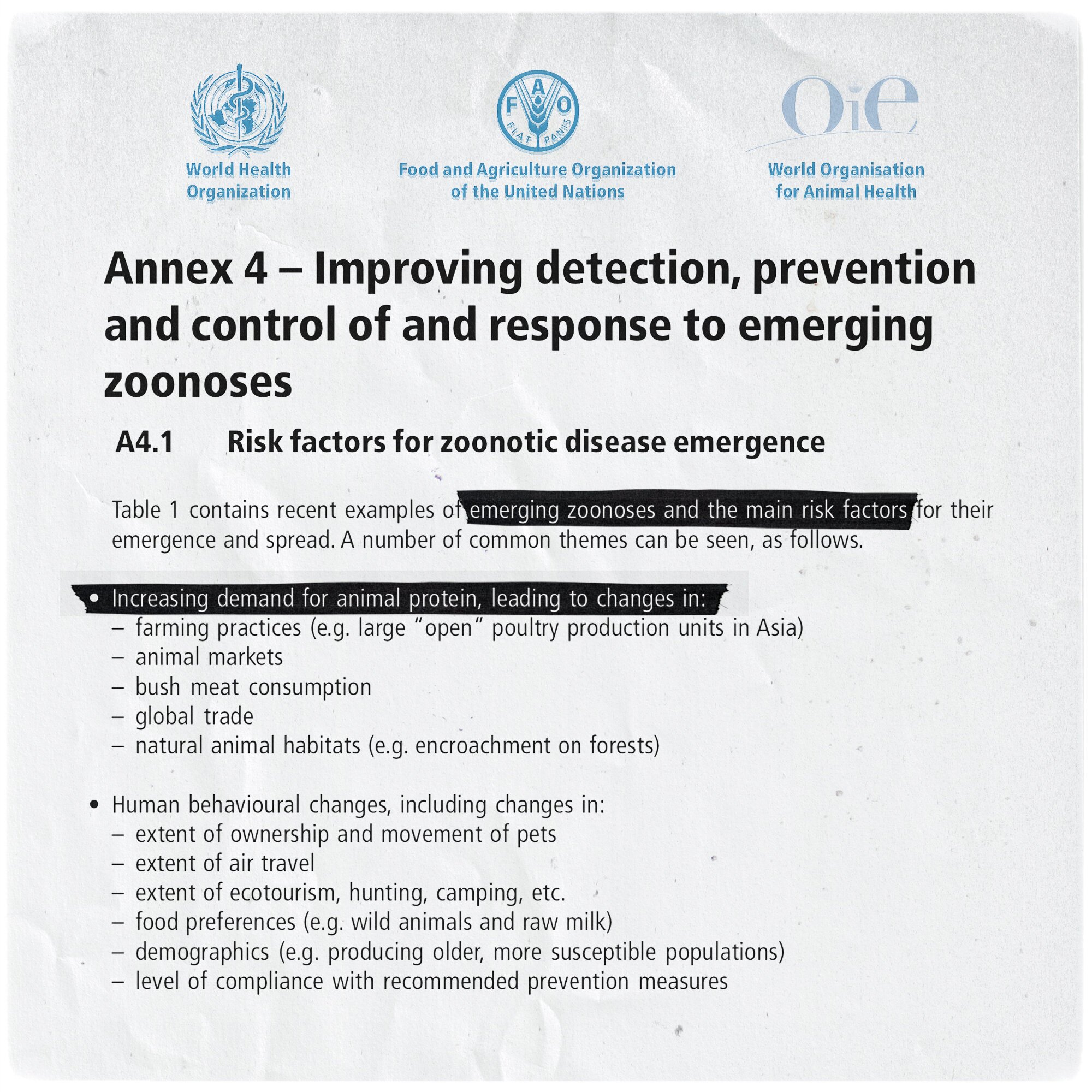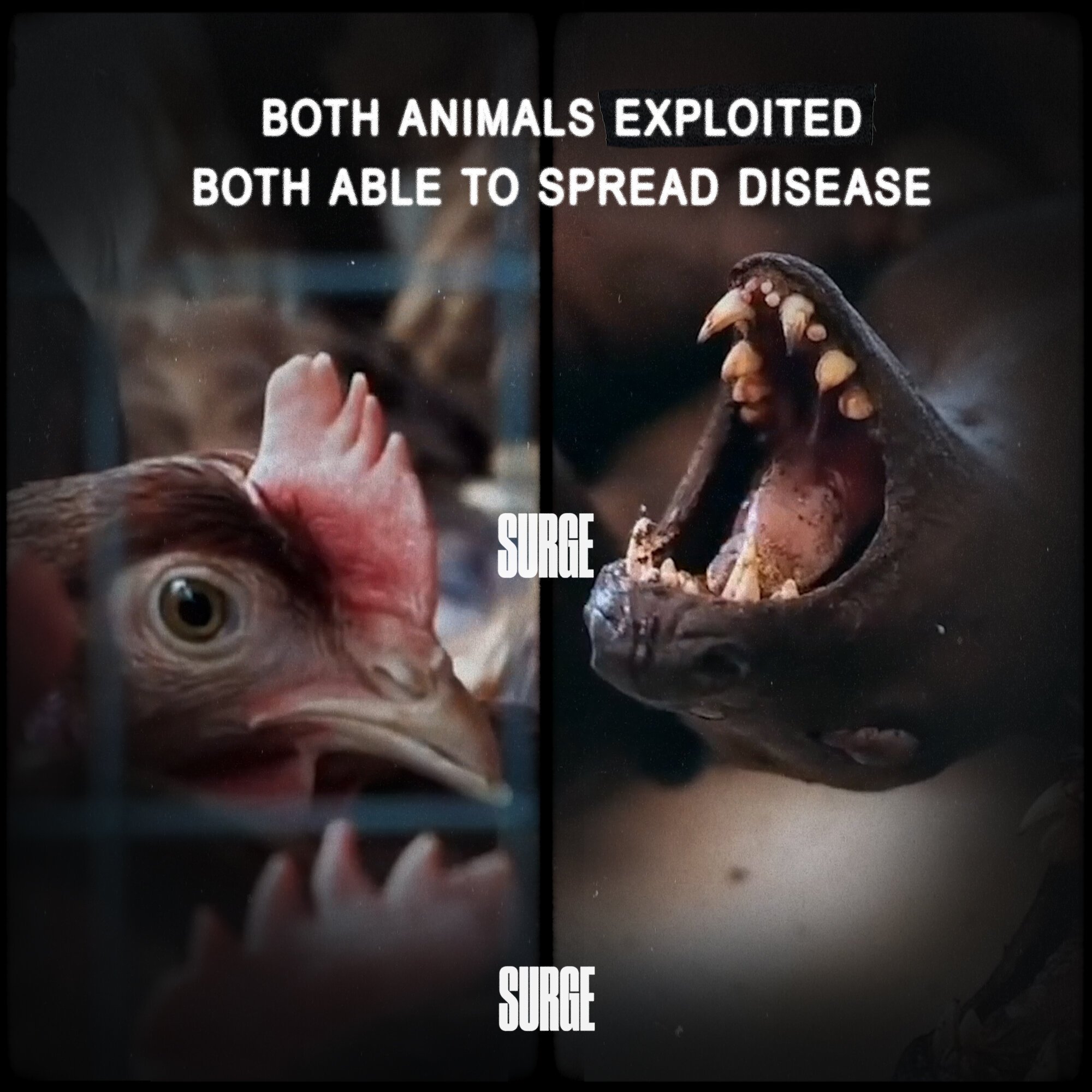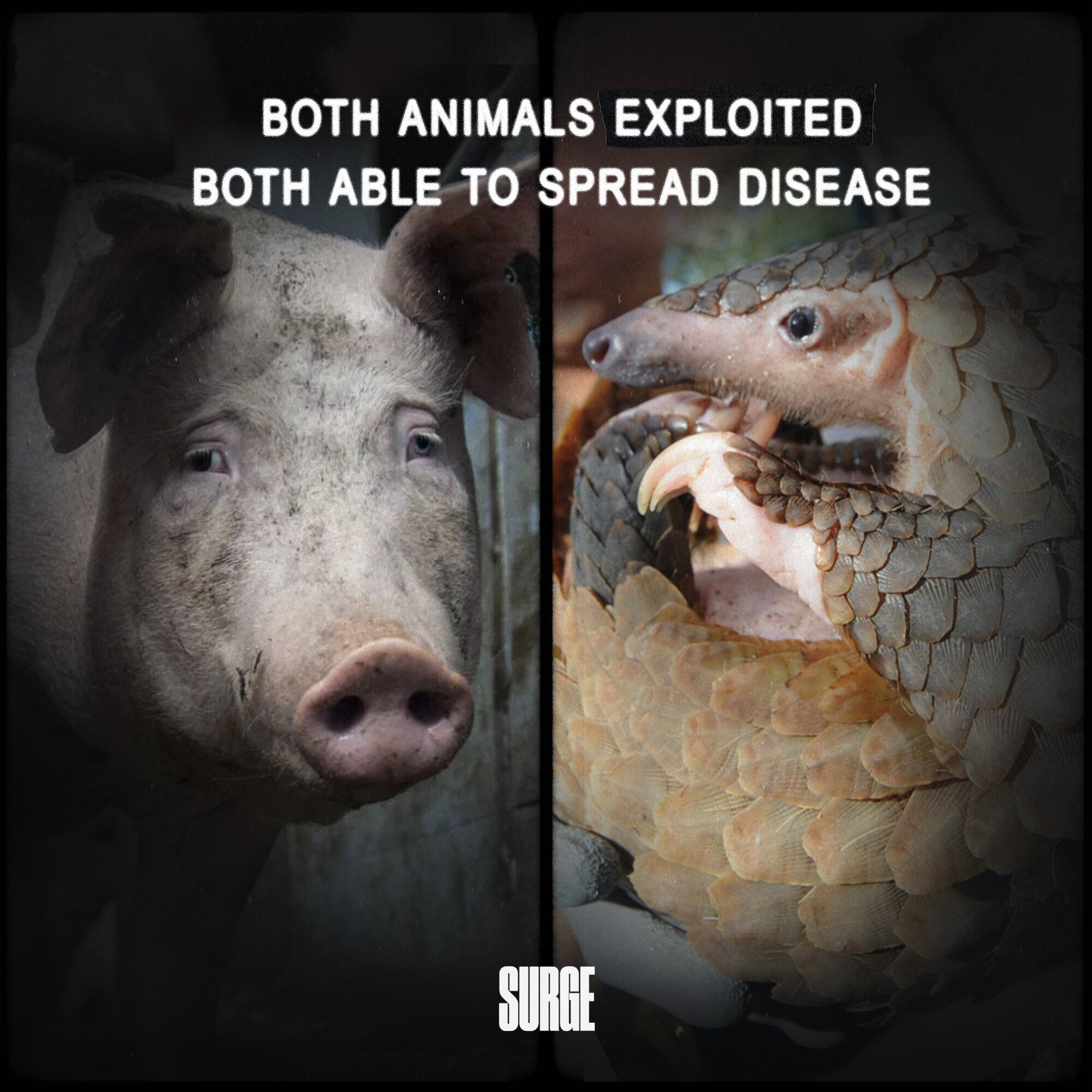CORONAVIRUS:
How Did it Really Start & How Do We Stop it From Happening Again?
Many of the world’s deadliest outbreaks, including COVID-19, SARS and bird flu - are directly linked to the exploitation of animals by humans.
Summarised in our latest Surge Media campaign released amid the global coronavirus pandemic, and explored in greater depth in our white paper, Surge has brought together findings from the world’s leading authorities on infectious diseases including the World Health Organisation (WHO), Centers for Disease Control and Prevention (CDC), Food and Agriculture Organization of the United Nations (FAO) and World Organisation for Animal Health (OIE).
““The CDC warns that three out of four new or emerging infectious diseases in people come from animals, while the WHO, FAO and OIE have previously stated that increased demand for animal protein is one of the main risk factors of a pandemic.””
The HIV virus started because of humans eating chimpanzees and the recent Ebola outbreak started because of people eating bats. Furthermore, BSE and the human equivalent vCJD is believed to have started in the UK because farmers were feeding dead infected cattle back to cattle, forcing them to cannibalise, and an ancestral strain of swine flu was traced back to a pig farm in North Carolina.
Surge also hopes that shedding light on the global prevalence of zoonotic outbreaks will help shift blame away from certain countries and cultures associated with more recent diseases, such as China where both COVID-19 and SARS are believed to have originated from so-called ‘wet’ markets according to the most widely accepted theories.
In light of recent attacks against individuals who appear Asian, Surge urges the public to understand that diseases occur all over the world - including the US (HIV and swine flu) and the UK (BSE / vCJD) - and their places of origin can be different to where their major outbreaks were recorded.
Not all of the world’s zoonotic outbreaks can be attributed to the intentional exploitation of non-human animals, but enough have been to warrant a discussion about the way we use others. The transmission of zoonotic diseases to humans is not entirely preventable as there is always a chance that zoonotic viruses, bacteria and other pathogens can be passed to humans in situations where there is no direct exploitation of animals, but Surge posits that the risk would be considerably lower than, taking the example of swine flu, in an intensive farming environment where huge numbers of animals are brought into close proximity with humans in a way that would virtually never happen in any other setting, or in the case of BSE, where cows would never naturally cannibalise other cows.
Moving away from the use of non-human animals will greatly lower the risk of future outbreaks of unknown zoonotic diseases, and save not only non-human animal lives, but those of countless thousands of humans. While it is impossible to predict how many lives could be saved this way, COVID-19 has already killed around 25,000 worldwide to-date, while other recent outbreaks like SARS, swine flu and avian flu combined have killed hundreds of thousands.
SOURCES & CITATIONS:
https://apps.who.int/iris/bitstream/handle/10665/68899/WHO_CDS_CPE_ZFK_2004.9.pdf http://www.fao.org/3/i1963e/i1963e00.pdf
https://www.theaidsinstitute.org/education/aids-101/where-did-hiv-come-0 https://www.independent.co.uk/news/world/americas/ebola-outbreak-is-bushmeat-to-blame-9804605.html https://www.cdc.gov/prions/bse/about.html
https://www.ecdc.europa.eu/en/vcjd/facts
https://www.wired.com/2009/05/swineflufarm/
https://www.ecdc.europa.eu/en/novel-coronavirus/event-background-2019 https://www.sciencedirect.com/topics/biochemistry-genetics-and-molecular-biology/sars-coronavirus
http://www.fao.org/news/story/en/item/210621/icode/
https://www.ncbi.nlm.nih.gov/pmc/articles/PMC2865087/
https://www.theguardian.com/commentisfree/2020/mar/25/new-virus-china-covid-19-food-markets
https://www.bbc.co.uk/news/health-29604204
https://www.newscientist.com/article/dn18063-timeline-the-secret-history-of-swine-flu/
https://www.ncbi.nlm.nih.gov/books/NBK215318/
https://sentientmedia.org/coronavirus-should-make-you-reconsider-eating-meat/
https://www.independent.co.uk/news/health/coronavirus-antibiotics-wild-animals-wildlife-china-wuhan-bat-pangolin-a9407261.html





